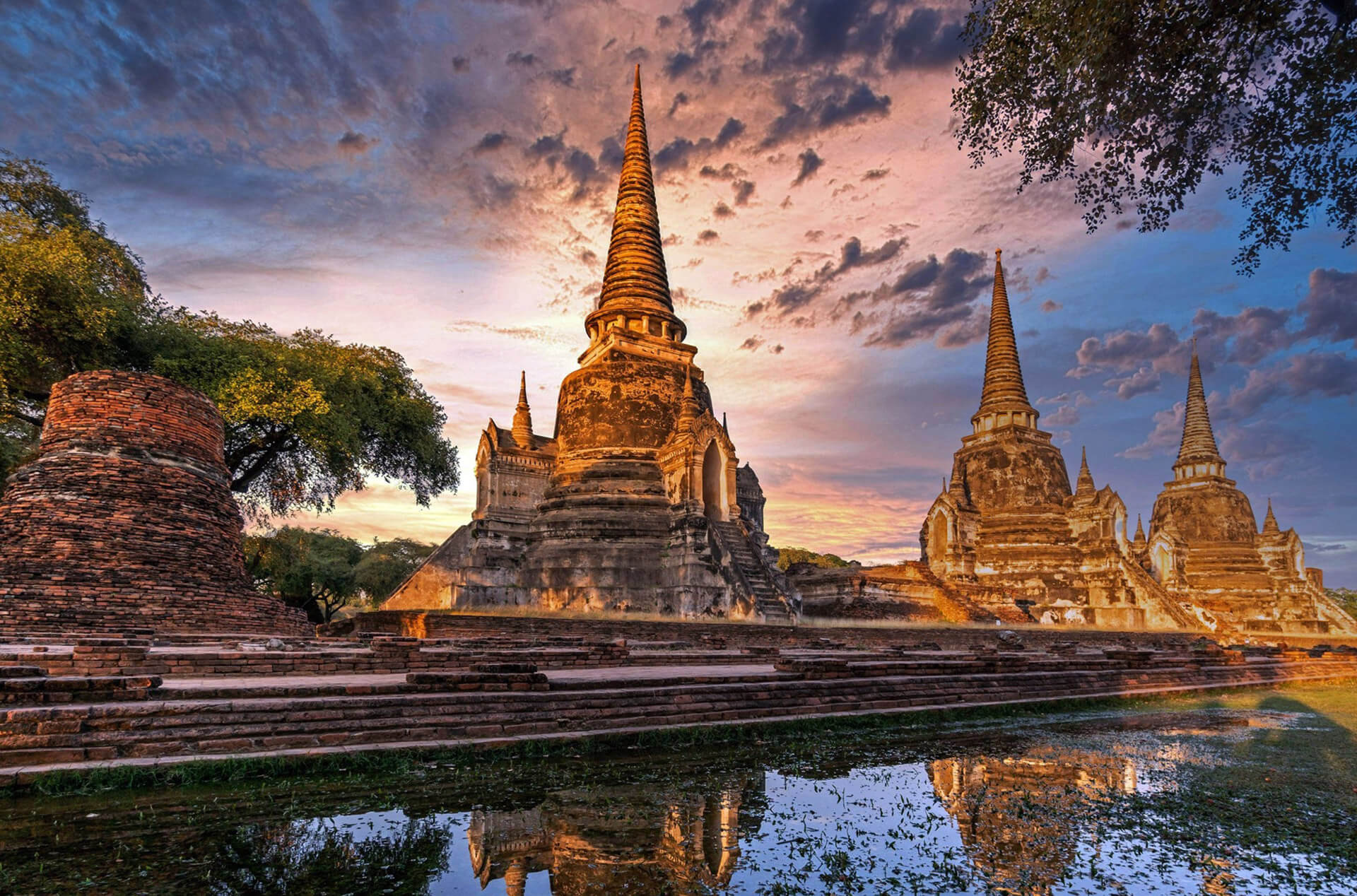
- On 20/02/2024
- In Blogs Travel Tips
- Tags:
Ayutthaya
Thailand’s ancient capital, just outside of Bangkok 🇹🇭 and now home to ruined palaces and crumbling Buddha statues, was once one of the world’s most cosmopolitan cities, a vast span of grand palaces and gilded temples.
Sources: Google Arts and Culture | UNESCO | Wikipedia
Historic City of Ayutthaya
The Historic City of Ayutthaya, founded in 1350, was the second capital of the Siamese Kingdom. It flourished from the 14th to the 18th centuries, during which time it grew to be one of the world’s largest and most cosmopolitan urban areas and a center of global diplomacy and commerce. Ayutthaya was strategically located on an island surrounded by three rivers connecting the city to the sea. This site was chosen because it was located above the tidal bore of the Gulf of Siam as it existed at that time, thus preventing attack of the city by the sea-going warships of other nations. The location also helped to protect the city from seasonal flooding.
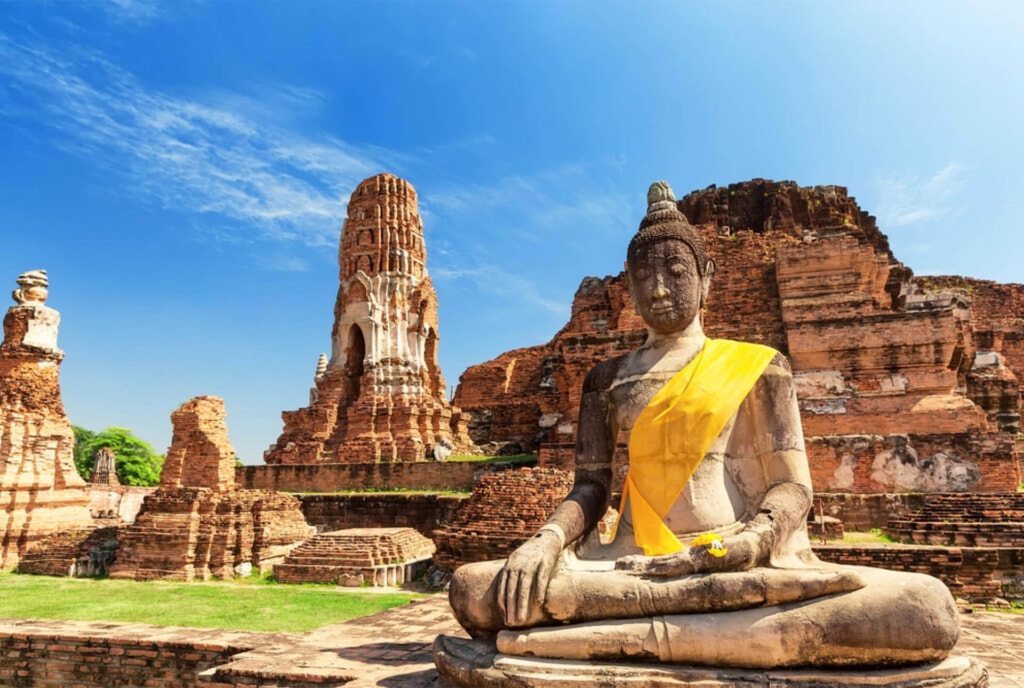
The city was attacked and razed by the Burmese army in 1767 who burned the city to the ground and forced the inhabitants to abandon the city. The city was never rebuilt in the same location and remains known today as an extensive archaeological site. At present, it is located in Phra Nakhon Si Ayutthaya District, Phra Nakhon Si Ayutthaya Province. The total area of the World Heritage property is 289 ha.
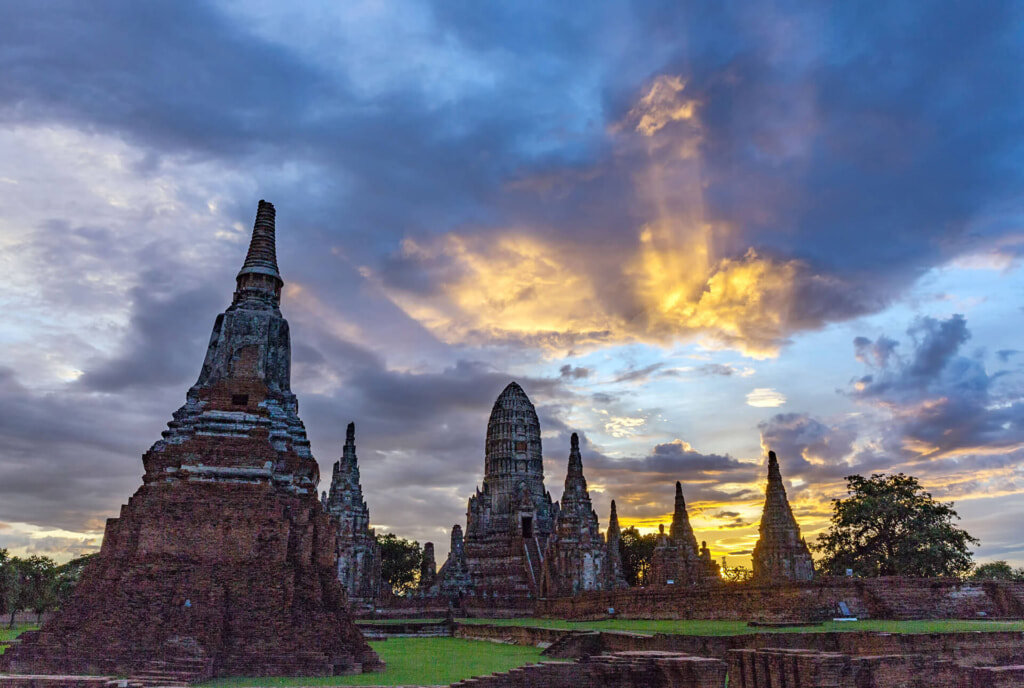
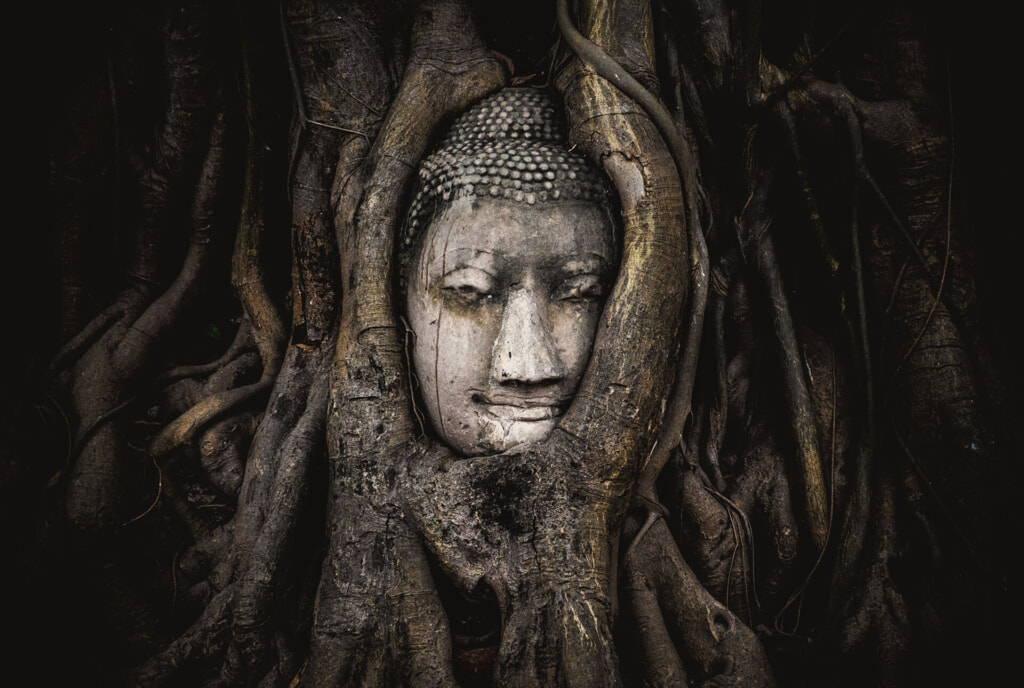
Once an important center of global diplomacy and commerce, Ayutthaya is now an archaeological ruin, characterised by the remains of tall prang (reliquary towers) and Buddhist monasteries of monumental proportions, which give an idea of the city’s past size and the splendor of its architecture. Well-known from contemporary sources and maps, Ayutthaya was laid out according to a systematic and rigid city planning grid, consisting of roads, canals, and moats around all the principal structures. The scheme took maximum advantage of the city’s position in the midst of three rivers and had a hydraulic system for water management which was technologically extremely advanced and unique in the world.
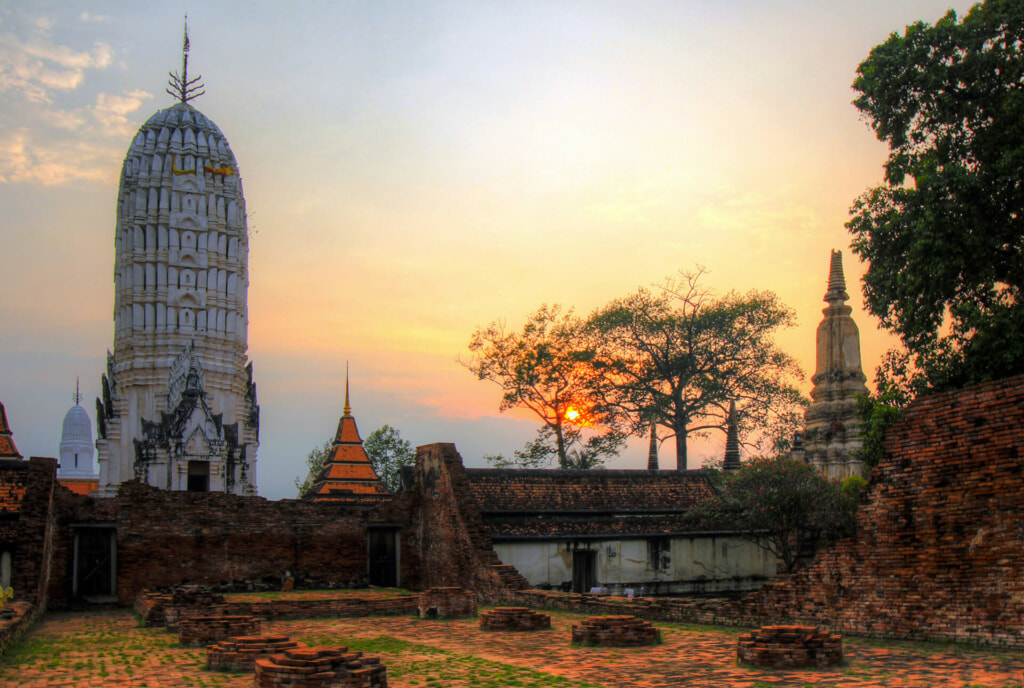
The city was ideally situated at the head of the Gulf of Siam, equi-distant between India and China and well upstream to be protected from Arab and European powers who were expanding their influence in the region even as Ayutthaya was itself consolidating and extending its own power to fill the vacuum left by the fall of Angkor. As a result, Ayutthaya became a center of economics and trade at the regional and global levels, and an important connecting point between the East and the West.
The Royal Court of Ayutthaya exchanged ambassadors far and wide, including with the French Court at Versailles and the Mughal Court in Delhi, as well as with imperial courts of Japan and China. Foreigners served in the employ of the government and also lived in the city as private individuals. Downstream from the Ayutthaya Royal Palace there were enclaves of foreign traders and missionaries, each building in their own architectural style. Foreign influences were many in the city and can still be seen in the surviving art and in the architectural ruins.
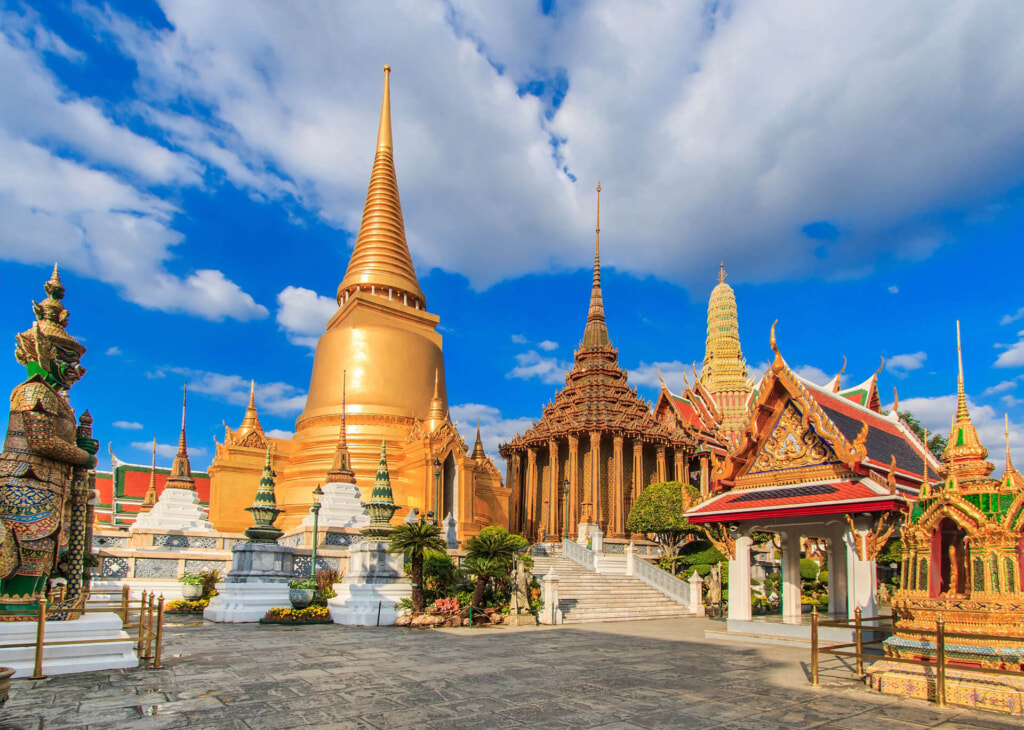
The Ayutthaya school of art showcases the ingenuity and the creativity of the Ayutthaya civilization as well as its ability to assimilate a multitude of foreign influences. The large palaces and the Buddhist monasteries constructed in the capital, for example at Wat Mahathat and Wat Phra Si Sanphet, are testimony to both the economic vitality and technological prowess of their builders, as well as to the appeal of the intellectual tradition they embodied.
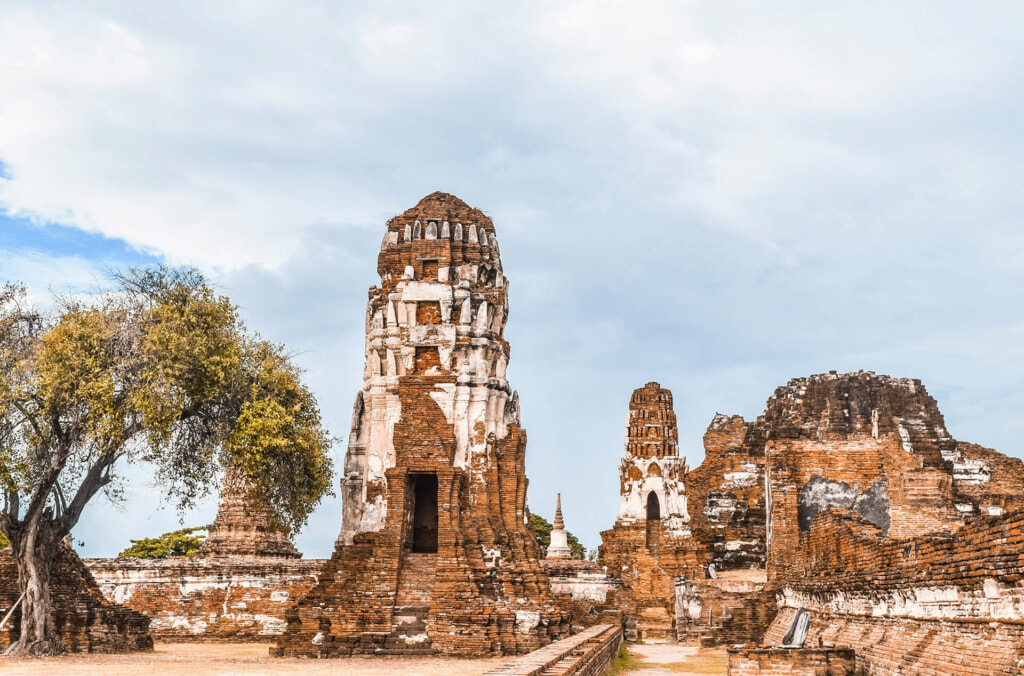
All buildings were elegantly decorated with the highest quality of crafts and mural paintings, which consisted of an eclectic mixture of traditional styles surviving from Sukhothai, inherited from Angkor, and borrowed from the 17th and 18th century art styles of Japan, China, India, Persia and Europe, creating a rich and unique expression of a cosmopolitan culture and laying the foundation for the fusion of styles of art and architecture popular throughout the succeeding Rattanakosin Era and onwards.
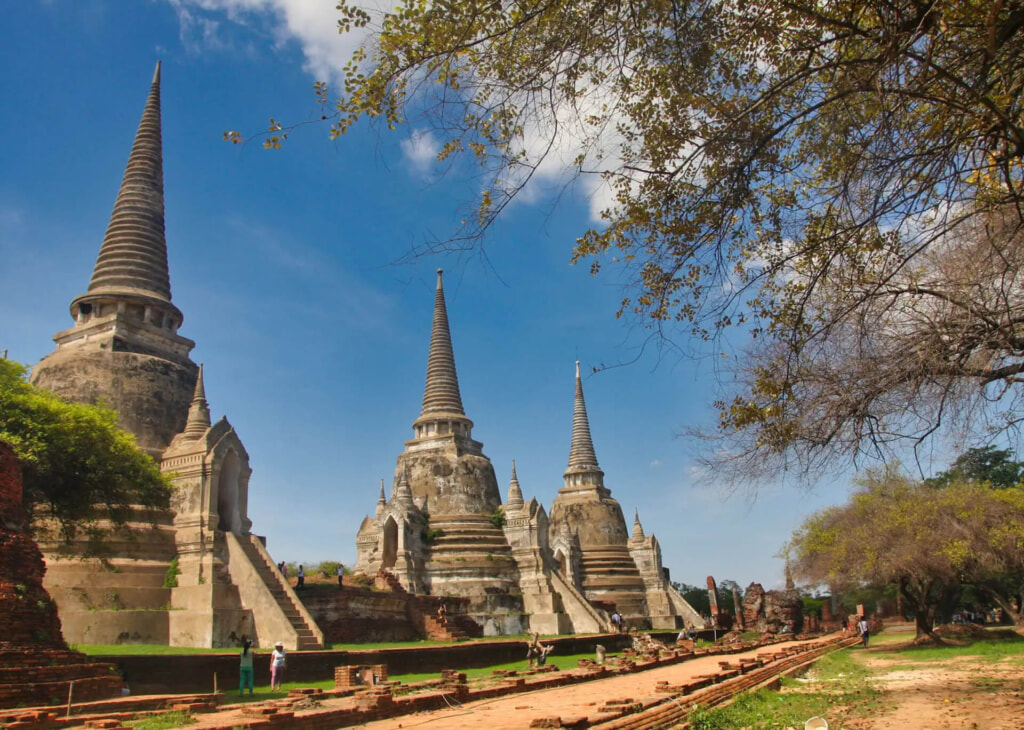
Indeed, when the capital of the restored kingdom was moved downstream and a new city built at Bangkok, there was a conscious attempt to recreate the urban template and architectural form of Ayutthaya. Many of the surviving architects and builders from Ayutthaya were brought in to work on building the new capital. This pattern of urban replication is in keeping with the urban planning concept in which cities of the world consciously try to emulate the perfection of the mythical city of Ayodhaya. In Thai, the official name for the new capital at Bangkok retains “Ayutthaya” as part of its formal title.
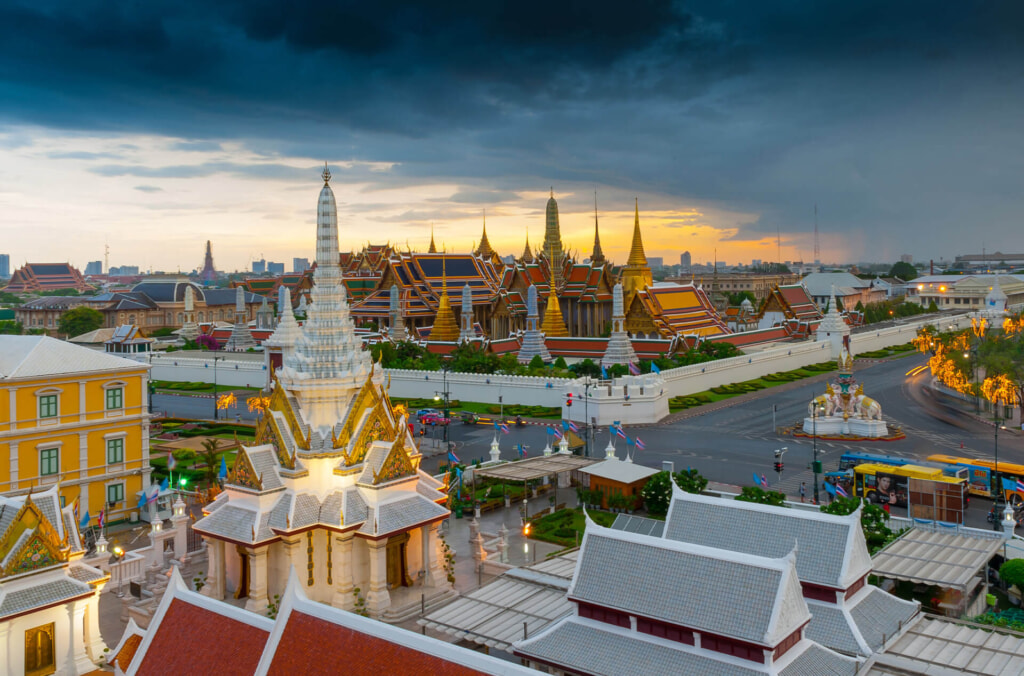
Ayutthaya Today
The city of Ayutthaya is a UNESCO World Heritage Site for the site’s architecture, art, and urban development. It is also currently protected by Thai law under the Act on Ancient monuments, Antiques, Objects of Art and National Museums. The city of Ayutthaya and its modern development have left the temples scattered between residential and commercial buildings, so there is currently an effort to expand the boundaries of the historical park to protect the remaining temples and ruins. The temples are still visited today by many, and there are several tours that advertise river views of many of the temples.
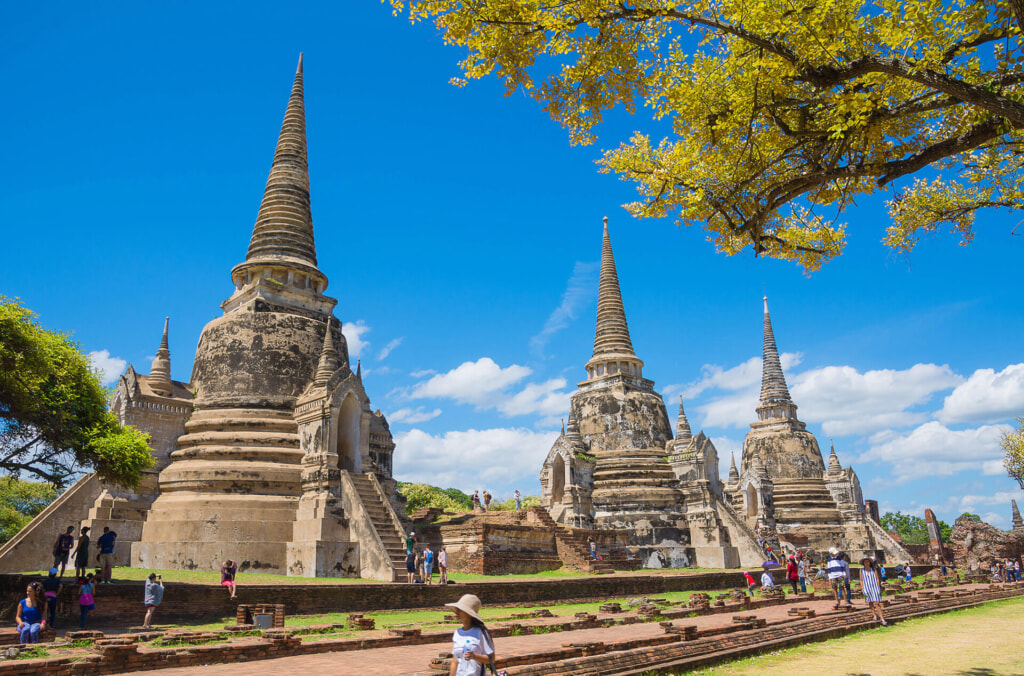
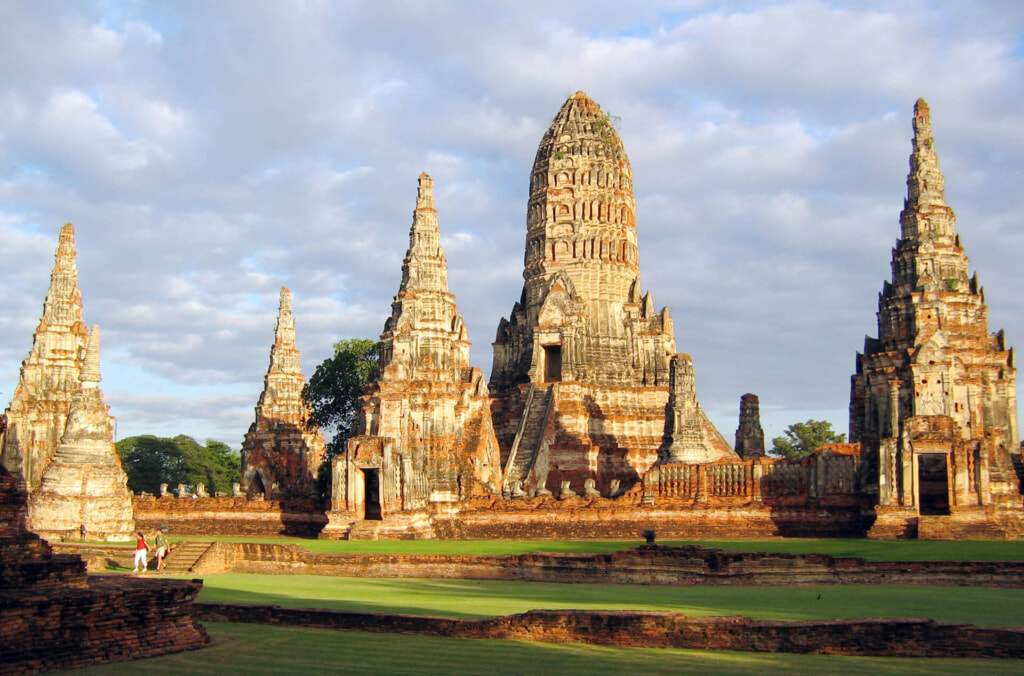
Wat Phra Si Sanphet
Wat Phra Si Sanphet was the most important temple in Ayutthaya. Being a temple of the royal family, there were no quarters for monks, and the site was used exclusively for royal ceremonies.
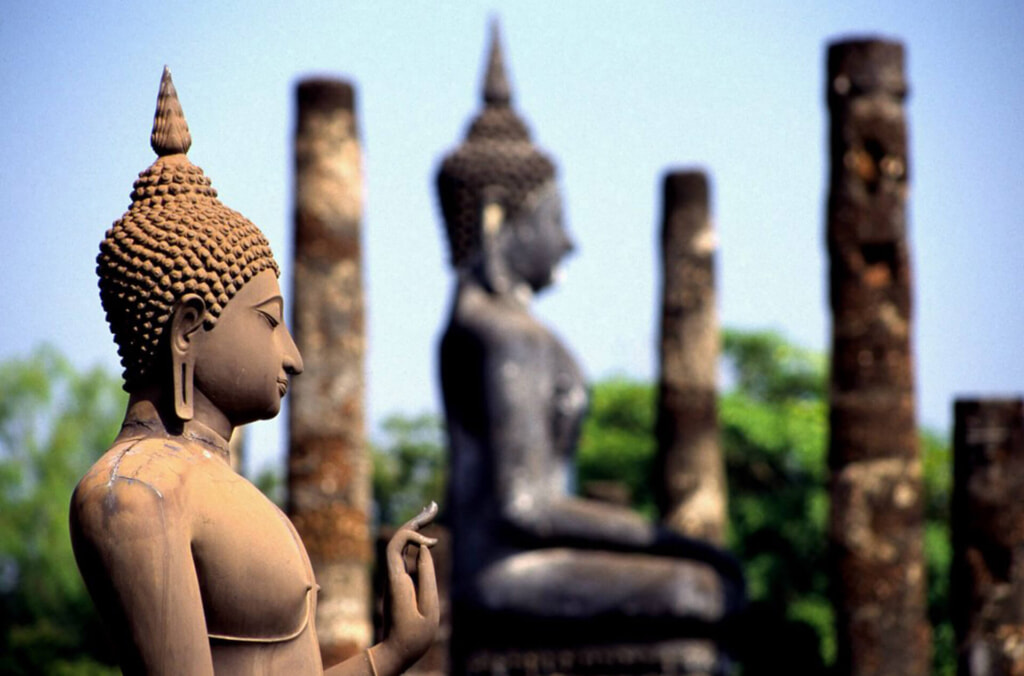
Its three chedis, which would have been covered in gold, are believed to hold the ashes of three Kings: King Trailok, King Borom Ratchathirat III and King RamaThibodi II. The three bell shaped chedis are a symbol for Thailand today.
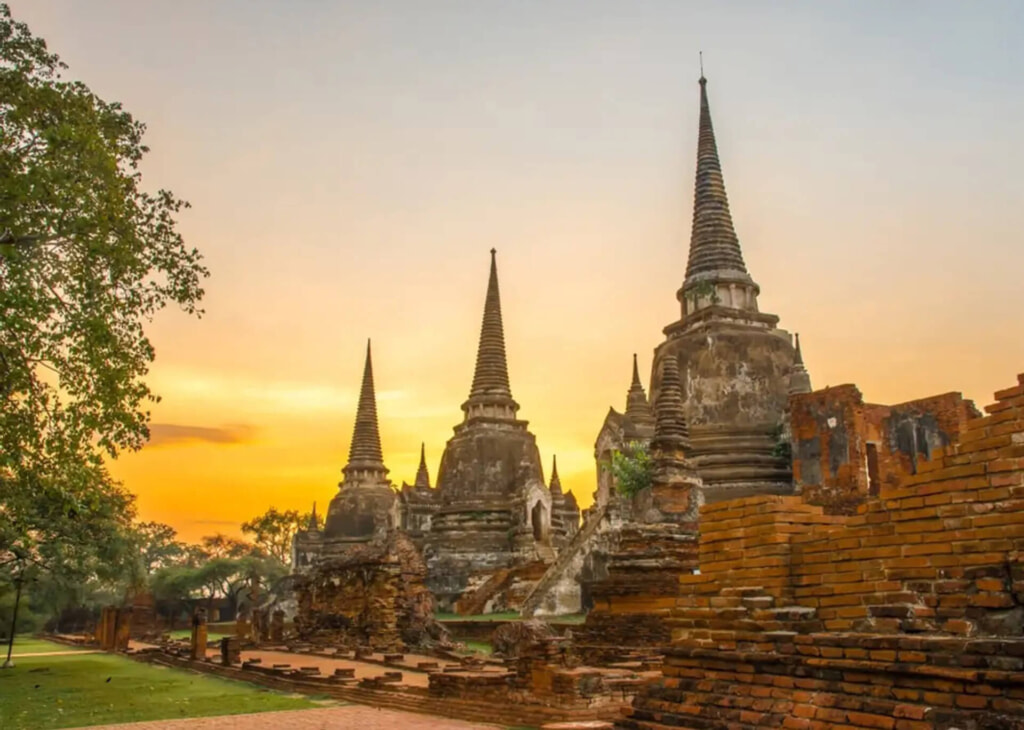
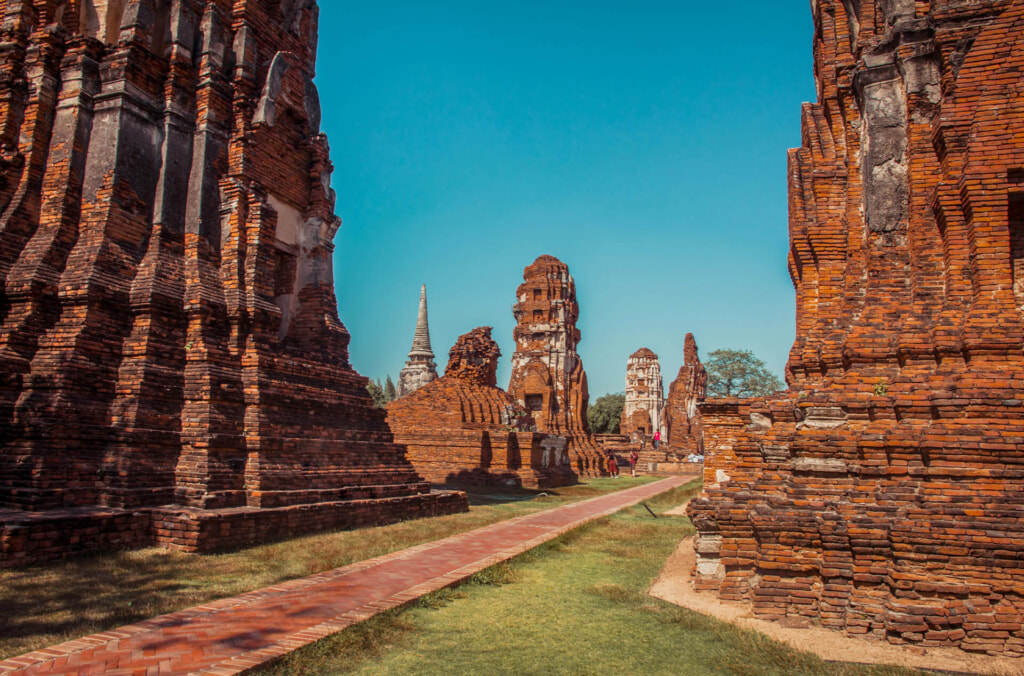
Sources: Google Arts and Culture | UNESCO | Wikipedia
Thiên Xuân Travel – Live your travel dreams!
Park 2, 208 Nguyen Huu Canh Street, Ward 22,
Binh Thanh District, Ho Chi Minh City, Vietnam
booking@thienxuantravel.com or gd@thienxuantravel.com
Hotline: +84 888 890 898
Office in the United States
14114 Beech Glen Dr, Houston, TX 77083
Phone: +1 (281) 906-2744

